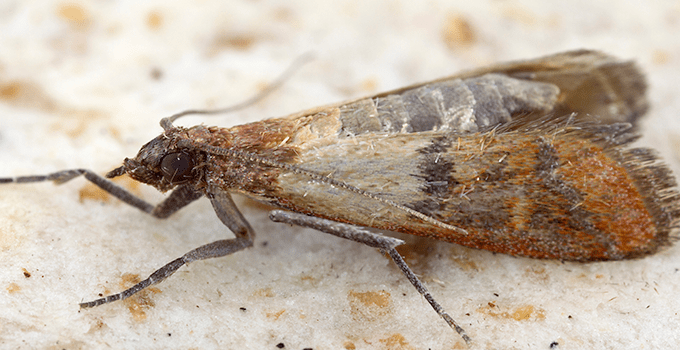
How To Stop Invasive Pantry Pests This Summer
8/20/2018
When we head to our pantry looking for something yummy, it can be very startling when instead of a delicious treat, we find a creepy pest instead! Pantry pests can be quite a nuisance to homeowners and have the potential to contaminate the food inside our cupboards and pantries if we aren’t careful. It’s important for homeowners to be aware of the most common types of pantry pests in the area, what to look out for, and how to get rid of them if they do find their way inside your home.
The first pantry pest that we frequently come across frequently is the cigarette beetle. These pests lay their eggs in pantry items. Gross, right? Adult cigarette beetles are usually 1/10 of an inch long and are a light yellowish-brown color. Their bodies are oval-shaped and have the appearance of being humpbacked because of the angle at which they hold their heads. In their larval stage, these pests are a creamy white color and their bodies look more worm-like. Cigarette beetles infest a wide variety of products including cereal, pasta, spices, pet food, and more. They are often brought into homes through food items that were bought from a grocery store that were already infested before they were taken home.
Another common pantry pest is the drugstore beetle. These pests lay their eggs in food and non-food items that include books, wool, leather, and prescription drugs. When they hatch and turn into adults, they have oval-body shape, are a reddish-brown color, and are about ⅛ of an inch in length. These beetles have an antenna that ends in a three-segmented club and have striated wing covers. Similar to the cigarette beetle, they have a humpbacked appearance.
Lastly, we have Indian meal moths. These pantry pests lay their eggs on or inside packaged food items such as dried fruit, dried pasta, bread, flour, crackers, and more. When these eggs hatch, the larvae then spin silky threads throughout the food as they feed and crawl around. Adult Indian meal moths grow between ½ to ⅝ of an inch in length. The back half of their wings are copper, dark gray, or bronze, while the front half is a yellowish-gray color; these two halves are divided by a dark colored band.
While these pests are not considered very dangerous, they do contaminate our food with their larvae and their urine and feces, so any infected items should be discarded immediately.
You are probably thinking that these pests sound pretty disgusting and wondering if there is anything that you can do to prevent them on your own? The answer is yes and no. There are certainly ways that you can be proactive against these pests. Some of the best techniques include inspecting any dry goods at the store for holes or tears before purchasing, storing dry goods in plastic or glass containers, throwing out any old or expired food items in your pantry cupboard, caulking any cracks, crevices, gaps, and holes in the exterior of your home, and repairing holes in window and door screens to prevent them from gaining entry to your home. Though they are helpful, the downside is that these techniques alone don’t always do the trick. Therefore, the best and most effective way to keep pantry pests out is pair these methods with a professional pest control plan!
At Schendel Pest Services, we will work with you to stop invasive pantry pests from invading your home using treatment methods that are safe yet effective. We follow strict guidelines and all of our products are EPA registered which is especially important when dealing with pests that infest food or the areas where food is stored. If you are a resident of Kansas, Missouri, Oklahoma, Arkansas, and Arizona, give us a call to find out how we can help you today!









